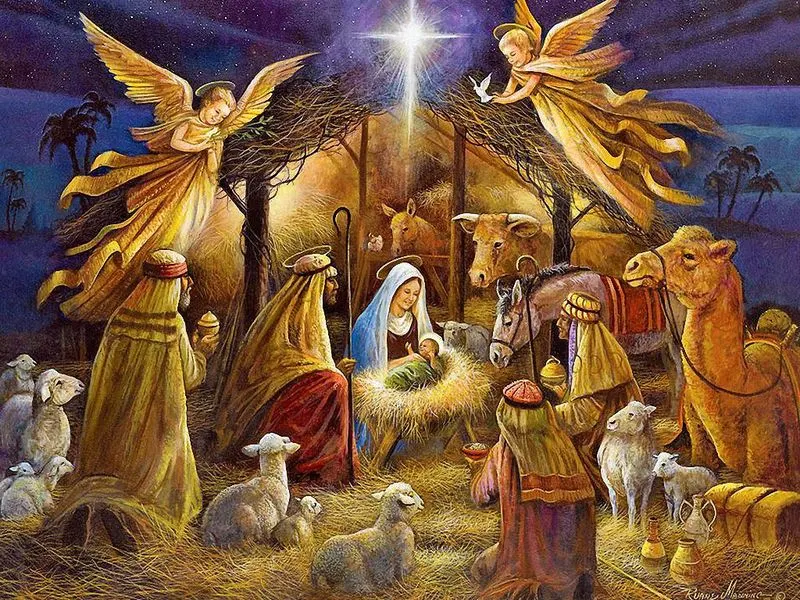Christmas is packed with traditions, but let’s be honest—not all of them are based on facts. Over the years, some pretty wild myths have worked their way into our holiday celebrations.
Whether it’s about Santa, festive customs, or those famous reindeer, people tend to believe some surprisingly untrue things about Christmas.
These 15 Christmas myths might make you say, “Wait, what? ” as you realize what’s real and what’s just a holiday tall tale.
Get ready to uncover the truth behind the season’s biggest stories—and maybe win a few rounds of trivia at your next holiday party!
Myth 1: Christmas Trees Were First Used in Germany

It’s commonly believed that Christmas trees originated in Germany, where they became widely popular. Yet, the tradition of decorating trees dates back even further to ancient civilizations.
Cultures like the Egyptians and Romans used evergreen branches to symbolize life during winter. Germany did play a role in popularizing the modern Christmas tree in the 16th century.
Still, the concept itself has roots that stretch much further back in history. This myth oversimplifies the rich tapestry of global traditions that contributed to its evolution.
Myth 2: The Date of December 25th Marks Jesus’ Birth

Countless individuals assume December 25th is the actual birth date of Jesus Christ. Historians, however, have found no conclusive evidence to support this claim.
The date was chosen by the early Church to coincide with pagan festivals celebrating the winter solstice. This move aimed to ease the transition of pagans into Christianity.
Over time, it became widely accepted as Jesus’ birthday. This example illustrates how religious observances were often aligned with existing cultural practices to promote acceptance.
Myth 3: The Song ‘Jingle Bells’ Was Written for Christmas

Despite its strong association with Christmas, ‘Jingle Bells’ was originally written for Thanksgiving. Composed by James Lord Pierpont in 1857, the song was meant to capture the lively spirit of sleigh races.
Over the years, it became tied to Christmas celebrations due to its wintery theme. This transformation highlights how cultural contexts can shift a song’s meaning.
It’s a perfect example of how traditions are often reinterpreted and repurposed over time.
Myth 4: Poinsettias Are Poisonous

A prevalent myth suggests poinsettias are deadly if ingested, sparking fear each holiday season. While not meant for consumption, they are not dangerously toxic.
The plant may cause mild irritation or discomfort if eaten by pets or humans. This misconception likely arose from overblown reports and has persisted despite evidence to the contrary.
It serves as a reminder to check facts before accepting common beliefs. Properly informed, one can enjoy the plant’s vibrant beauty without undue worry.
Myth 5: Santa Claus Lives at the North Pole

Many believe Santa resides at the North Pole in a quaint workshop surrounded by elves and reindeer. However, this isn’t based on any verifiable facts.
The myth likely stems from marketing strategies and popular culture. In reality, the concept of Santa’s North Pole residence emerged from various 19th-century literary works.
While charming, it’s purely fictional. The idea captures imaginations but has no historical grounding.
Santa’s storied home is more a reflection of creative storytelling than geographical truth.
Myth 6: Christmas Is the Most Important Christian Holiday

While Christmas is one of the most celebrated Christian holidays, Easter holds greater theological significance. Easter marks the resurrection of Jesus, a foundational event in Christian belief.
Christmas, commemorating Jesus’ birth, is undoubtedly significant but not considered the pinnacle of Christian observance. The emphasis on Christmas may be attributed to its broader cultural appeal and commercialization.
Understanding this helps to appreciate the distinct spiritual meanings within the Christian calendar.
Myth 7: Candy Canes Are Shaped Like a Shepherd’s Staff

It’s often said that candy canes are designed to resemble a shepherd’s staff as a nod to the shepherds in the nativity story. In truth, the candy cane’s shape was chosen for practical reasons related to manufacturing and storage.
Its curved top allows it to hang on trees, adding decorative appeal. This myth reflects a tendency to infuse everyday objects with symbolic meanings, even when none were intended.
It’s a testament to how traditions can evolve with creative interpretations.
Myth 8: ‘Xmas’ Is a Secular Abbreviation That Removes ‘Christ’ from Christmas

Many interpret ‘Xmas’ as a secular attempt to take ‘Christ’ out of Christmas. The truth is the ‘X’ represents the Greek letter Chi, the first letter of ‘Christ’ in Greek.
This abbreviation has been used in religious texts for centuries. Far from being a modern secularization, it maintains the spiritual essence of the holiday.
Understanding this can foster greater acceptance of different ways to refer to the festive season. It underscores the importance of context in interpreting language.
Myth 9: The Mistletoe Tradition Originated with the Druids

The custom of kissing under the mistletoe is often attributed to Druid practices. While Druids revered mistletoe for its mystical properties, the kissing tradition likely originated in Norse mythology.
According to legend, mistletoe symbolized love and friendship after being used to revive the god Balder. This charming story was adopted into Christmas customs in the 18th century.
It shows how myths can blend, leading to widespread misconceptions about their origins. The story of mistletoe beautifully illustrates cultural adaptation over time.
Myth 10: Santa’s Reindeer Are All Male

A common belief is that Santa’s reindeer are male, based on their names and depictions in popular media. However, real male reindeer shed their antlers by early December.
Female reindeer keep theirs throughout winter, suggesting Santa’s team might be female! This mix-up highlights how entertainment often diverges from biological facts.
It’s a fun exercise in reconsidering assumptions and embracing new perspectives. The reindeer myth adds a playful twist to the Santa legend, inviting curiosity about nature’s wonders.
Myth 11: The Polar Express Is Based on a True Story

Many assume the beloved tale of ‘The Polar Express’ is rooted in real-life events. In reality, the story is a creation of imagination, authored by Chris Van Allsburg in 1985.
Its enchanting narrative captures themes of belief and wonder during the Christmas season. The book’s success led to a film adaptation, enhancing its legendary status.
This myth demonstrates the power of storytelling in shaping perceived truths. A reminder that stories can inspire while remaining purely fictional.
Myth 12: All Christmas Elves Are Tiny

The image of diminutive elves bustling in Santa’s workshop is a staple of Christmas mythology. Yet, folklore across cultures portrays elves in various forms, from human-sized to miniature.
The depiction of tiny elves likely emerged from 19th-century literature and illustrations. This creative vision enhances the whimsical charm of holiday tales.
By exploring diverse elf representations, we gain insight into how cultural storytelling evolves. It’s an invitation to appreciate the imaginative layers behind beloved traditions.
Myth 13: Christmas Was Always Celebrated on December 25th

The belief that Christmas has always been celebrated on December 25th is widespread but inaccurate. Early Christians did not initially observe Christmas, and the date was formalized centuries later.
The Church chose December 25th to align with existing pagan festivals such as Saturnalia. This decision facilitated the acceptance of Christianity among pagan converts.
Understanding this history reveals how traditions are shaped by pragmatic decisions. It invites reflection on how holidays evolve in response to cultural and religious needs.
Myth 14: The Twelve Days of Christmas Refer to the Days Leading Up to Christmas

Many think the ‘Twelve Days of Christmas’ describe the days before the holiday. In reality, they begin on Christmas Day and extend to January 5th, leading up to the Epiphany.
This period was traditionally a time of celebration and reflection in Christian communities. The misconception likely arises from modern commercialization and the anticipation leading up to Christmas.
By understanding the true timing, one can appreciate the historical and religious significance of these days. It’s a reminder to look beyond surface interpretations.
Myth 15: Christmas Is Universally Celebrated on December 25th

While December 25th is a common date for Christmas celebrations, not all Christian communities observe it on this day. Some, like the Armenian Apostolic Church, celebrate on January 6th, while Orthodox Christians using the Julian calendar mark it on January 7th.
This variation reflects cultural diversity within Christianity. Awareness of these differences fosters respect and understanding across cultures.
The myth underscores the importance of recognizing that holiday traditions can vary significantly, even within a shared faith.

